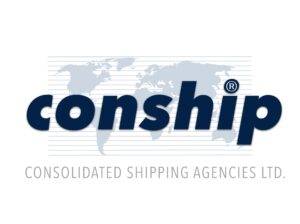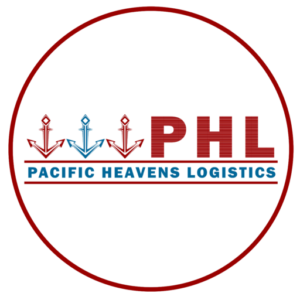How to Automate Your Business
Are you longing for a business that can function seamlessly even when you’re not around? Many entrepreneurs dream of the freedom and flexibility that come with a business that doesn’t solely depend on their constant presence. In this article, we will delve into the significance of business autonomy and show you how to automate your business to make it operate effortlessly without your constant involvement.

The Importance Of Being Able To Automate Your Business
The importance of business autonomy cannot be overstated. When your business relies heavily on your presence, it restricts your ability to take time off, explore other interests, or scale your operations. You may feel tied to your business, unable to fully enjoy the rewards of your hard work. However, by creating a system that allows your business to function without you, you unlock a world of possibilities. You can enjoy worry-free vacations, explore new ventures, spend quality time with loved ones, and focus on strategic growth and long-term planning.
In this article, we will explore the steps and strategies required to achieve this level of autonomy for your business. In showing you how to automate your business, we will cover effective delegation, building a strong team, implementing efficient systems and processes, and fostering a culture of accountability. By the end, you’ll have a clear roadmap to make your business run smoothly even in your absence. Let’s unlock the potential for true freedom in entrepreneurship!
The Goal: Automate Your Business Successfully
As a business owner, you’ve poured your heart and soul into building your company. You’ve worked tirelessly, making countless sacrifices along the way. But now you realize that for your business to thrive, it needs to run smoothly even without your constant presence.
The goal of making your business run without you goes beyond taking vacations or having more free time. It’s about creating a system that operates efficiently and effectively without relying solely on you. This level of autonomy is crucial for the long-term sustainability and growth of your business. Imagine being able to step away, knowing that everything will continue seamlessly. Your team knows their responsibilities and how to handle challenges, and they are empowered to make decisions in your absence. This independence gives you peace of mind and allows you to focus on strategic planning and business growth.
Overview of Key Steps and Strategies
Running a business without your constant presence may seem challenging, but with the right steps and strategies, it can become a reality. In our quest to show you how to automate your business, in this section, we’ll provide you with an overview of key steps and strategies that will help you automate your business.
Establish Clear Systems and Processes to Automate Your Business:
Begin by establishing clear systems and processes within your organization. Documenting every aspect of your business operations ensures tasks can be easily delegated and executed by your team members in your absence. Create standard operating procedures, training manuals, and implement project management tools to streamline workflows.
Building a Strong Team to Automate Your Business:
Building a strong team is essential for the smooth functioning of your business without you. Hire competent individuals who share your vision and values. Delegate responsibilities to capable employees and empower them to make decisions. Encourage open communication and foster a culture of trust within your team.
Leveraging Technology to Automate Your Business:
Furthermore, investing in technology can greatly help automate your business. Automate repetitive tasks through software solutions to save time and reduce dependency on individual employees. Implement customer relationship management (CRM) systems, accounting software, and other digital tools to streamline operations and allow for efficient management even in your absence.
Regularly Review and Refine Your Processes to Automate Your Business:
Lastly, regularly reviewing and refining your processes is vital for continuous improvement and to automate your business. Monitor key performance indicators (KPIs) to assess the effectiveness of your strategies and identify areas for growth or adjustment. Stay updated with industry trends and adapt accordingly to stay ahead of the competition.
By following these key steps and strategies, you’ll be able to automate your business with success. With a well-equipped team, efficient systems, and a culture of accountability, your business can run smoothly without you. Embrace the potential for freedom in entrepreneurship and enjoy the rewards of a self-sufficient business.
Building a Strong Team
Building a business that can operate smoothly without your constant presence is vital for long-term success. To achieve this, it’s crucial to focus on hiring the right people, delegating responsibilities effectively, and investing in training and development for your team.
Hiring The Right People to Automate Your Business:
When hiring, it’s important to identify the core competencies required for each role in your organization. Clearly define the skills, knowledge, and experience necessary for success. During interviews, ask effective questions that assess not only technical abilities but also qualities like adaptability, problem-solving, and teamwork. Look for candidates who align with your company’s values and share your vision.
Delegating Responsibilities to Automate Your Business:
To build a strong team that can run your business without you, delegate responsibilities based on each employee’s strengths and skills. Evaluate their capabilities and match them with appropriate tasks. Empower your employees to make decisions within their designated areas of responsibility. This fosters trust, autonomy, and a culture of accountability.
Training And Development to Automate Your Business:
Investing in ongoing training opportunities is essential for the long-term growth and success of your team. Provide internal and external training programs, workshops, conferences, and online courses. This enhances their abilities and empowers them to take on more responsibilities and make informed decisions. Foster a culture that values continuous learning and improvement.
By following these steps and focusing on hiring the right people, delegating effectively, and investing in training and development, you can build a strong team that can run your business without you. This enables you to focus on other aspects of your business or take time off, knowing that your team is capable of keeping things running smoothly.
Implementing Efficient Systems and Processes:
Running a business without constantly being present is achievable by streamlining operations, documenting processes, and monitoring for optimization. To streamline operations, start by identifying bottlenecks and inefficiencies within your current processes. Analyze each step of the business process to identify areas where things slow down or get stuck. Bottlenecks can be caused by outdated technology, lack of communication, or unnecessary steps. Once identified, automate repetitive tasks using software or tools to free up time and resources for more critical aspects of the business.
Creating standard operating procedures (SOPs) is essential for making your business independent of your constant presence. SOPs provide a clear roadmap for employees, ensuring consistent and efficient task performance. Be thorough and detailed when creating SOPs, breaking down tasks into step-by-step instructions and including visual aids. Regularly update SOPs to reflect process changes and improvements. Conduct training sessions to ensure everyone understands and follows the SOPs, encouraging feedback from your team and implementing regular performance evaluations.
Monitoring processes for improvements is vital in making your business self-sufficient. Constantly evaluate the efficiency and effectiveness of systems and processes. Leverage technology for analytics and data-driven decisions, gathering valuable insights to identify areas for improvement. Involve your team in the monitoring and optimization process, encouraging open communication and feedback. By regularly reviewing processes and leveraging technology, you can ensure your business operates efficiently even when you’re not present, creating a sustainable and scalable business model.
Cultivating A Company Culture
To ensure that your business can run smoothly without your constant presence, it is crucial to define clear core values and a mission statement. These foundational elements serve as the guiding force behind your business, providing purpose and direction.
Craft a concise yet powerful mission statement that inspires both employees and customers. Reflect on what your business truly stands for and the long-term goals you hope to achieve.
Alongside your mission, identify and promote core values that align with it. Core values shape your company culture and guide behavior and decision-making. They set expectations for how employees interact with each other, customers, and stakeholders.
To effectively promote your core values, ensure they are communicated clearly and consistently throughout all levels of your business. Incorporate them into team meetings, training sessions, and everyday conversations. When employees understand and embrace these values, they become an integral part of your company’s DNA.
Fostering Teamwork And Collaboration For Business Success
To maximize teamwork and collaboration within your business and achieve success, it is essential to create a positive work environment that prioritizes open communication.
Start by prioritizing employee well-being, providing a clean, comfortable, and aesthetically pleasing workspace that promotes focus and creativity. Implement policies that promote work-life balance, such as flexible working hours or remote work options. Respecting and valuing employees’ personal lives encourages them to bring their best selves to work.
Open communication is crucial for fostering teamwork and collaboration. Create a safe space for employees to share ideas, concerns, and feedback without fear of judgment or retribution. Hold regular team meetings and brainstorming sessions that value everyone’s input. Embracing diverse perspectives and ideas leads to innovative solutions.
In conclusion, fostering teamwork and collaboration relies on creating a positive work environment where employees feel supported and encouraged. Prioritize employee well-being and promote open communication to cultivate a company culture that values collaboration and drives business success.
Empowering Leadership At All Levels: Building a Self-Sufficient Business
To make your business self-sufficient and not solely reliant on your involvement, it is vital to develop leadership skills among your employees and distribute decision-making authority.
Empower your team members by providing opportunities for them to take on new responsibilities and challenges. Offer training programs and workshops that focus on essential leadership qualities, such as effective communication, problem-solving, and decision-making. Encourage them to lead projects and initiatives, allowing them to gain valuable experience and build confidence.
In addition to developing leadership skills, distribute decision-making authority throughout the organization. Give employees autonomy in their areas of expertise, demonstrating trust and confidence in their capabilities. This autonomy fosters motivation and engagement among team members.
Remember to regularly check in with your employees, providing feedback and guidance when needed, and celebrating their successes. By investing in the development of your team’s leadership skills and distributing decision-making authority, you create a business that can thrive even when you’re not there.
Implementing a Scalable Business Model
To ensure your business runs smoothly without your constant involvement, the first step is to assess your current business model. This critical evaluation helps identify scalability challenges that could hinder growth potential. By understanding these challenges, you can strategically overcome them and create a more scalable business model.
Assessing your current business model involves analyzing market trends and opportunities. Examine market conditions, customer preferences, and industry trends to identify areas where your business can expand and thrive. Staying informed about the latest market developments positions your business to take advantage of emerging opportunities and stay ahead of the competition.
During this assessment, it’s essential to be honest about any limitations or bottlenecks within your current model. These may include limited production capacity, inefficient processes, or over-reliance on specific individuals. Identifying these scalability challenges allows you to address them proactively, making necessary changes to ensure long-term success.
Strategic Planning for Business Growth and Independence
As a business owner, your primary goal is to ensure the growth and success of your company. To achieve this, it’s crucial to implement a scalable business model that allows for expansion and increased profitability. One key aspect of strategic planning is diversifying your product or service offerings.
Diversification not only attracts new customers but also retains existing ones. Conduct market research to identify gaps in the market and understand customer needs and preferences. This knowledge helps you determine which new products or services to introduce, aligning with your target audience’s demands.
Additionally, exploring new markets and demographics can significantly contribute to business growth. Consider geographical expansion into regions or countries where demand for your products or services exists. Conduct thorough market analysis to assess the viability of these markets, identifying any cultural or regulatory differences that may affect your operations.
Moreover, targeting different demographics within your existing market opens up new growth opportunities. Analyze consumer trends and behaviors to identify untapped segments that would benefit from what you offer. Tailor your marketing strategies and messaging to effectively reach these specific demographics.
In conclusion, strategic planning for growth involves expanding product/service offerings and exploring new markets and demographics. By continuously innovating and adapting to changing customer needs, you can position your business for long-term success while reducing reliance on yourself as the sole driving force.
Building Resilience: Ensuring Business Stability Without Your Constant Presence
Building resilience is crucial for ensuring your business runs smoothly without your constant involvement. This involves developing contingency plans and adapting to changing business conditions. In today’s fast-paced and unpredictable market, being prepared for unforeseen circumstances is essential.
One way to build resilience is by creating contingency plans for different scenarios. Identify potential risks and develop strategies to mitigate them. For example, have a plan in place for unexpected market changes or disruptions in the supply chain. By being prepared, you can quickly respond to challenges and minimize their impact.
Adapting to changing business conditions is another key aspect of building resilience. The market is constantly evolving, and as a business owner, it’s important to stay ahead. Keep up with industry trends, monitor customer preferences, and be open to new ideas and opportunities. By remaining flexible and adaptable, your business will remain relevant and competitive, even in uncertain times.
In conclusion, building resilience through contingency planning and adaptability is vital for making your business run smoothly without your constant presence. By being proactive and prepared, you can navigate challenges smoothly and maintain long-term success.
Leveraging Technology
In today’s fast-paced business world, leveraging technology is crucial for ensuring that your business can run smoothly even when you’re not around. To achieve this, selecting the right tools tailored to your industry is a vital first step. Conduct thorough research to identify software or platforms designed specifically for your industry or customizable to meet your needs. Consider factors like ease of use, scalability, and compatibility with your existing systems.
Once you’ve found the right tools, integrate them seamlessly into your current systems for maximum efficiency. This integration enables smooth communication and data flow between different departments, eliminating manual processes, reducing errors, and saving time. Remember, investing in technology is an investment in your business’s independence from your direct involvement.
Investing in your digital presence is critical in today’s digital age. Enhancing your online marketing strategies through search engine optimization (SEO), content marketing, and email marketing can significantly improve your online visibility and attract organic traffic. Optimize your website to improve its visibility and create valuable and engaging content to establish your brand as an industry leader.
Leverage social media and digital advertising platforms like Facebook, Instagram, Twitter, and LinkedIn to connect with potential customers and build brand awareness. Create compelling content, engage with your audience, and run targeted ad campaigns to effectively promote your products or services to a larger audience. Embrace e-commerce solutions to expand beyond physical limitations and sell globally, providing secure payment options and personalized shopping experiences.
Data-driven decision-making is crucial in today’s digital age. Collect and analyze relevant data from various sources within your business, such as customer information, sales data, and website analytics. Consolidate and use advanced analytics tools to uncover patterns, trends, and correlations that can help you make informed decisions. This data can also optimize supply chain management by identifying bottlenecks and inefficiencies.
Leveraging technology for data-driven decision-making not only saves time and resources but also gives you a competitive edge. Automate data collection and analysis with software solutions to gain real-time insights into your business performance. Embrace the power of data to drive success in today’s business landscape and make more informed choices that improve your operations.
By implementing these essential tips, you can ensure that your business runs smoothly without you, allowing you to focus on other important aspects of your entrepreneurial journey.
Transition Planning
Preparing for your absence is a vital step in ensuring the smooth operation of your business even when you’re not there. By identifying key roles and responsibilities and developing a succession plan, you can create a framework that allows your business to thrive without your constant presence.
Firstly, it’s crucial to identify the key roles and responsibilities necessary for the day-to-day operations of your business. By clearly defining these roles and understanding the skills and expertise required for each, you can ensure a seamless transition when you’re not available.
In addition, developing a succession plan is essential. This includes identifying potential candidates within your organization who can take on leadership roles. Providing them with training and mentoring will prepare them for their future responsibilities and ensure continuity in leadership.
To make your business run without you, gradually delegate more responsibilities over time. Start by identifying tasks that can be entrusted to capable individuals within your organization. This not only lightens your workload but also empowers your team members to grow and contribute to the success of the business.
Regularly monitor progress and make necessary adjustments during this transition period. Schedule check-ins with your team members to discuss their progress, address challenges, and provide guidance. This open line of communication keeps everyone aligned and working towards common goals.
Additionally, continuously evaluate the performance of both individuals and the overall business. Track key metrics and indicators that reflect the health and growth of your business. This will enable you to make informed decisions and ensure that your business remains on track even without your direct involvement.
Remember, making your business run without you is a gradual process. By delegating responsibilities, monitoring progress, and fine-tuning along the way, you’re setting yourself up for long-term success while fostering a sense of ownership among your team members.
Regular check-ins with your team and continuous evaluation of business performance are crucial parts of this transition planning. By staying involved and proactive, you can ensure a smooth transition as you gradually withdraw from day-to-day operations. This way, you maintain control over the direction of your business while empowering your team to take on more responsibility.
Conclusion
In this article, we discussed the key takeaways for creating a business that can run smoothly without your constant presence. To achieve this, it’s crucial to establish clear systems and processes within your business. By documenting every aspect of your operations, you create a roadmap that allows others to step in and handle responsibilities. To automate your business takes time and effort, but with dedication and consistent implementation of these strategies, you can create a thriving business that doesn’t rely solely on you. Imagine having a business that can operate smoothly even without your constant oversight. With the right strategies in place, this dream can become a reality. There are numerous significant benefits to having a business that can function independently.
Firstly, it provides you with the freedom and flexibility to pursue other interests or take time off. Instead of being tied down to your business 24/7, you can achieve a better work-life balance and have more time for yourself and your loved ones. This newfound freedom allows you to recharge, explore new opportunities, or simply relax without the constant stress of managing every aspect of your business.
Secondly, a self-sufficient business opens up possibilities for growth and expansion. When your business relies solely on you, there is often a limit to its growth potential. By creating systems and processes that empower your team to make decisions and handle day-to-day operations, you create space for scalability. With the right structure in place, your business can thrive even in your absence, enabling you to focus on strategic planning and taking your company to new heights.
Moreover, building a self-sufficient business increases its value in the long run. If you ever decide to sell or pass on your business, having systems in place that ensure its smooth operation without relying heavily on the owner’s involvement will make it more attractive to potential buyers or successors. A well-structured and autonomous business demonstrates stability and reliability, qualities highly sought after in any acquisition or succession process.
































